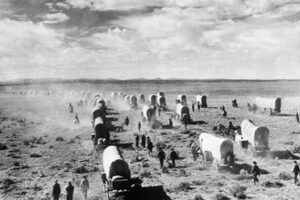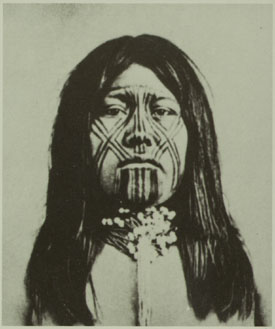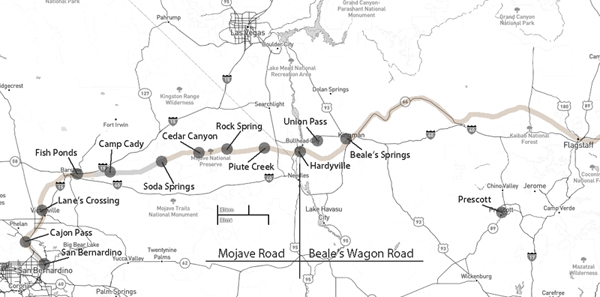The Rose-Baley Wagon Train was a significant event in the history of American westward migration. Here is an overview of its history:
Background and Planning

The Rose-Baley Wagon Train was one of the earliest attempts to reach California via the newly built Beale Wagon Road. The expedition was organized in 1858 by two groups, one led by Leonard Rose from New Mexico and another by Dr. Joseph R. Bailey (often spelled Baley) from Iowa. Their goal was to find a shorter and safer route to California, bypassing the treacherous terrain and hostile territories commonly faced on the Oregon and Santa Fe Trails.
The Journey Begins
The two groups met in Albuquerque, New Mexico, in July 1858. They combined their resources, forming a large wagon train of about 60 to 70 wagons and over 100 people, including men, women, and children. They followed the Beale Wagon Road, which had been surveyed by Edward Fitzgerald Beale, a former naval officer and explorer.
Challenges and Conflicts

The journey was fraught with difficulties. The terrain was rugged, and the summer heat in the desert was relentless. Water sources were scarce, making sustaining the livestock and the travelers challenging.
In August 1858, the wagon train faced a significant challenge when encountering the Mojave Desert. They were attacked by a group of Native Americans, often identified as Mojave Indians, who were hostile to the encroachment on their lands. The attack resulted in the death of several members of the wagon train and significant loss of livestock.
Turning Back

After the attack, the survivors were forced to abandon their goal of reaching California via the Beale Wagon Road. They retreated to Albuquerque, where they regrouped and considered their options. The expedition’s failure was a significant setback for those hoping to establish a new route to California.
Legacy
The Rose-Baley Wagon Train is remembered as one of the early attempts to pioneer new routes to the West Coast. Despite its failure, the expedition highlighted the challenges of westward expansion and the need for more secure and reliable routes. It also underscored the tensions between settlers and Native American tribes during American history.
The Beale Wagon Road itself eventually became a significant route for future migrations, contributing to the expansion and development of the American West. The experiences of the Rose-Baley Wagon Train provided valuable lessons for subsequent expeditions and were part of the broader narrative of the westward movement in the United States.